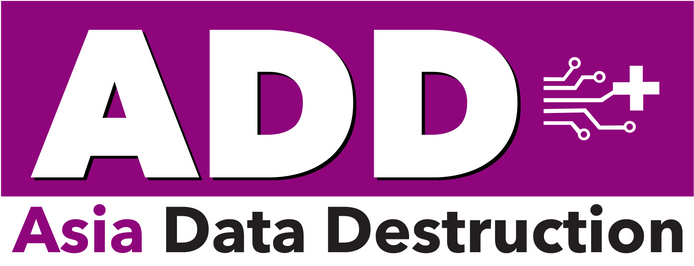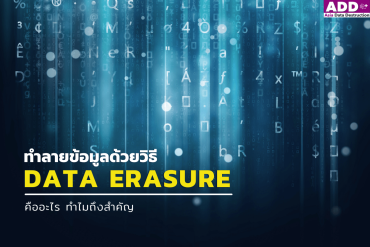In today’s digital age, where data plays a crucial role in both personal and business realms, the importance of protecting sensitive information cannot be overstated. Data wiping or data erasure has emerged as a critical process in ensuring the secure disposal of data. This practice involves permanently removing all traces of data from storage devices, rendering them unrecoverable by any means. Whether it’s an old computer, a hard drive, or a mobile device, data wiping provides a reliable solution for safeguarding sensitive information and mitigating the risk of data breaches.
What is Data Wiping or Data Erasure?
Data wiping is a program used to permanently delete data by overwriting it on the original data on a hard drive. It writes over every part of the data. The process of data wiping involves using data to overwrite the original data that we want to erase on the hard drive, typically using the number 0 (from binary code). This method can be used to erase data on multiple devices simultaneously and allows the possibility of reusing the devices again.
Data wiping, also known as data erasure, refers to the systematic process of permanently deleting data from a storage device to prevent unauthorized access or data recovery. When data is deleted conventionally, such as using the delete button or formatting the device, it is not completely eradicated. Instead, it remains on the device until overwritten by new data. This leaves a potential security vulnerability, as skilled individuals or malicious software could recover the deleted information.
Data wiping employs specialized software or hardware techniques to overwrite the entire storage media with random or predefined patterns, making the original data unrecoverable. It ensures that no remnants of the original data are left, ensuring the privacy and confidentiality of sensitive information.
When we delete files or format a storage device, the data is not completely erased. It remains on the device and can potentially be recovered using specialized software. Data wiping, on the other hand, goes beyond simple deletion and uses advanced techniques to overwrite the existing data with random patterns of 0s and 1s.
The goal of data wiping is to make the original data unrecoverable by replacing it with meaningless information. By doing so, it helps protect sensitive data from falling into the wrong hands and mitigates the risk of data breaches, identity theft, or unauthorized access.
Data wiping is commonly performed when:
1. Retiring or selling old storage devices: Before disposing of or selling a computer, hard drive, or any other storage device, it is crucial to wipe the data from it to prevent others from accessing your personal or confidential information.
2. Recycling electronic devices: When recycling electronic devices, data wiping ensures that any data left on the devices is permanently removed, reducing the risk of data leaks.
3. Transferring ownership: Before transferring ownership of a device, such as when selling or donating it, data wiping ensures that your personal data is not accessible to the new owner.
4. Compliance with regulations: Many industries, such as healthcare and finance, have strict regulations regarding data protection and privacy. Data wiping helps organizations comply with these regulations by ensuring that sensitive data is securely erased when it is no longer needed.
The benefits of data wiping include:
1. Data Protection: By securely wiping data, sensitive information and confidential data can be protected from unauthorized access or misuse. This is particularly important when disposing of or recycling storage devices, as it helps prevent data breaches and identity theft.
2. Compliance with Regulations: Many industries and jurisdictions have specific regulations and data protection laws that require organizations to properly erase or destroy data before disposing of equipment. Data wiping helps organizations comply with these regulations and avoid potential legal and financial consequences.
3. Cost Savings: Instead of physically destroying storage devices, data wiping allows them to be reused or resold. This can result in significant cost savings for organizations, as they can repurpose the devices or generate revenue from their sales.
4. Environmental Considerations: Properly wiping data and reusing or recycling storage devices helps reduce electronic waste and its impact on the environment. It promotes sustainability by extending the lifespan of devices and minimizing the need for new ones.
5. Reuse and Resale: Data wiping and erasure allow organizations to securely reuse or resell their storage devices without the risk of exposing sensitive data. This promotes efficient resource utilization and reduces electronic waste.
6. Peace of Mind: Knowing that data has been securely erased provides peace of mind to individuals and organizations. It alleviates concerns about data remnants, accidental data leaks, or the potential for information to fall into the wrong hands.
To ensure data is wiped securely and in accordance with international standards, it is recommended to use globally certified data wiping software. Such software employs advanced algorithms and techniques to overwrite the data multiple times, making it extremely difficult or impossible to recover. These programs often come with certifications, such as those from the National Institute of Standards and Technology (NIST) or the Common Criteria for Information Technology Security Evaluation (CC). These certifications validate the effectiveness and reliability of the software in securely wiping data.
In Summary
Data wiping or data erasure is a process that permanently removes data from storage devices, rendering it irrecoverable. It offers numerous benefits, including enhanced data security, compliance with regulations, reuse and resale of devices, and cost-effectiveness. By implementing data wiping practices, individuals and organizations can ensure the protection of sensitive information, reduce the risk of data breaches, and demonstrate responsible data management practices in an increasingly data-driven world.
read more information: Data Erasure Software


 ไทย
ไทย 日本語
日本語 Tiếng Việt
Tiếng Việt ភាសាខ្មែរ
ភាសាខ្មែរ


